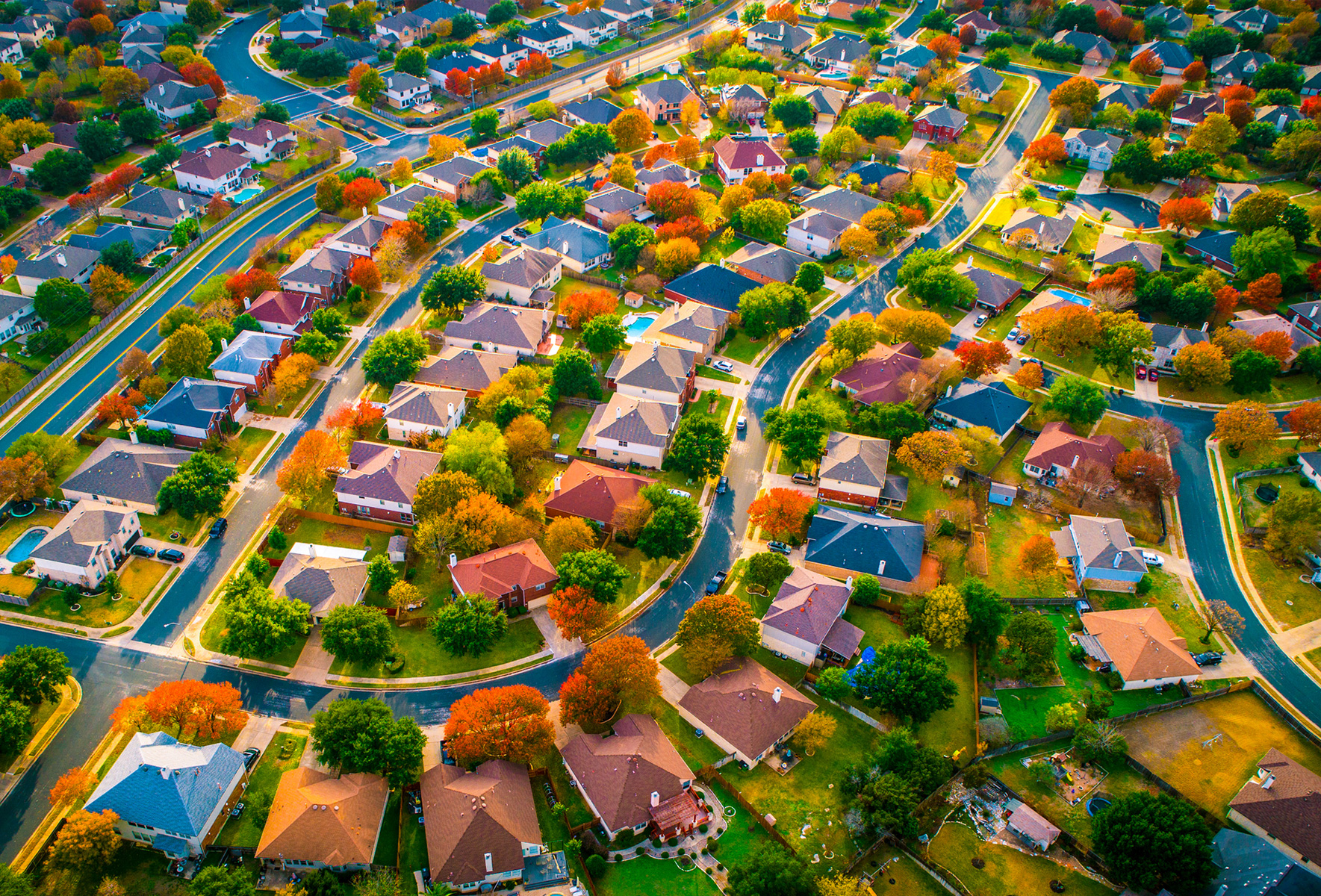Toxic Flood from Dam Breach Having Largest Impact on Russian-held Territory
On June 6 at approximately 2:50 a.m. local time torrents of water began flowing through a breach in the Nova Kakhovka dam. Built in 1955, the dam had spanned the Dnieper River, the body of water that now separates the Ukrainian-controlled "right" (west) bank from the Russian-occupied "left" (east) bank in the Kherson region of southern Ukraine. The resulting flood sent a flood of toxic water rushing through agricultural fields, nature preserves, and human settlements, mainly on the lower-lying, Russian-occupied "left" bank of the river.
While responsibility for the catastrophe has not been definitively established, most of the available evidence suggests that the breach was caused either by deliberate Russian actions, or by structural problems in the dam that were exacerbated by months of fighting in the area. However, if Russia did indeed intentionally destroy the dam, its military reasoning for committing such an act remains opaque.
"The flooding has disproportionately affected military preparations on the Russian-occupied side," George Barros of the Institute for the Study of War told Newsweek. "The left bank is lower, the slope is lower, and so the water is flowing mainly in the direction of the Russian positions on that side of the river."
"I've seen many Russian field fortifications completely enveloped by water," he added. "The forward Russian trench lines and dugouts that were right up against the river, ostensibly designed in order to protect against any Ukrainian cross-river maneuver, have been swallowed by the water. I've seen landmine fields swallowed by the water."

The ultimate battlefield effect of the flooding, however, will not be clear for several more days, or even weeks.
"If the flooding stabilizes within the next few days and the volume of water isn't so great that it categorically forecloses the options to cross the river, then it could allow the Ukrainians to make first contact on the left bank," Barros said, "not at the point that was designed to be the Russian tip of the spear, but at positions further back, which weren't designed to withstand that kind of initial Ukrainian assault."
"On the other hand, if the water doesn't settle for weeks and the Ukrainians can't cross the river, then it will mean that the Russians have essentially taken a Ukrainian option off the table," he explained. "The Russians could then focus more resources on other sectors, at least for as long as the river remains impassable."
"All we can say definitively is that this development will change the topography of certain sectors of the battlefield in ways which are not yet fully clear," he added.
While Ukraine's plans for its much-anticipated counteroffensive remain a closely guarded secret, its messaging has drawn attention to the possibility that cross-river incursions might have been intended to play a key role in the looming battle. It is possible that, believing such a river crossing was imminent, Russian forces deliberately destroyed the dam in order to forestall the maneuver.
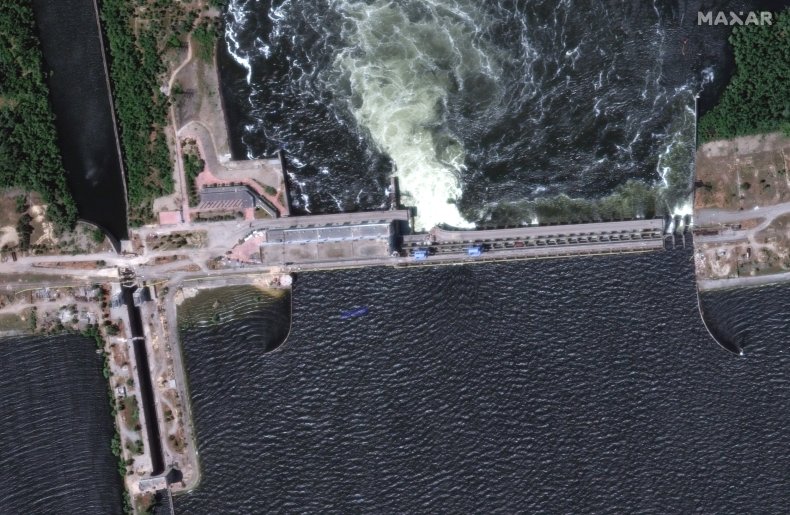
However, given the temporary battlefield effects that the resulting flooding is likely to have, it also remains possible that the breach was simply the unintended consequence of over a year of war waged in the immediate vicinity of a Soviet-era structure holding back 18 cubic kilometers of water.
On October 20, 2022, Ukrainian president Volodymyr Zelensky publicly accused the Russian side of mining the dam as part of a potential plot to slow down Ukrainian counteroffensive operations that ultimately liberated the entirety of right bank Kherson region in November of last year. Since then, however, despite reports of Ukrainian cross-river raids, Russian forces have continued to occupy all of left bank Kherson region, including the city of Nova Kakhovka itself.
Much of the run-off from insecticides and the heavy metals from industry further up the river sink to the bottom of the reservoir behind a dam, meaning that the silt which is now being carried into agricultural fields, residential areas, and national parks downstream is highly toxic.
Since the river became the dividing line between the two armies last November, shelling in the area has become even more intense. On June 1 of this year, images appeared showing damage to the road running along the top of the Nova Kakhovka dam. Given the circumstances, it remains possible that the collapse of the structure five days later was the result of structural factors exacerbated by the ongoing Russian invasion of Ukraine, rather than of deliberate sabotage by either side.
While the ultimate battlefield effects of the dam's destruction may not become clear for weeks, the environmental consequences will be felt for decades to come. According to Vladyslav Balynsky, head of the Ukrainian NGO "Green Leaf," the flood water rushing through what is left of the Nova Kakhovka dam is carrying with it decades worth of pollutants.
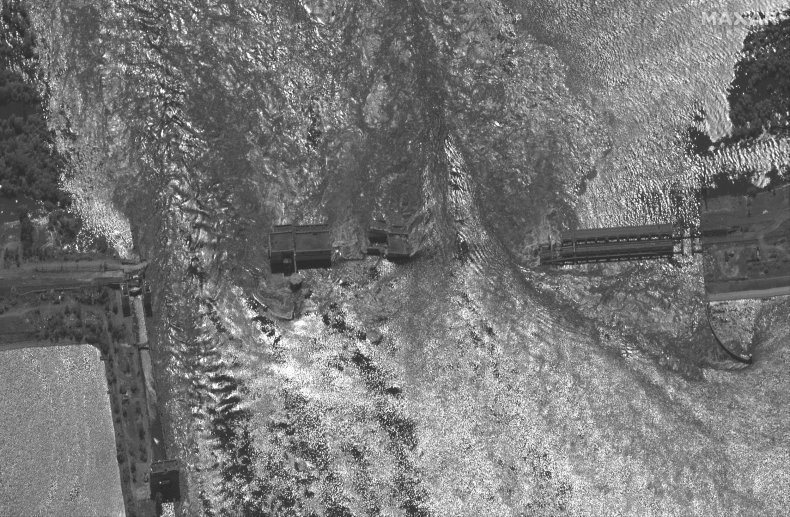
"Much of the run-off from insecticides and the heavy metals from industry further up the river sink to the bottom of the reservoir behind a dam," Balynsky told Newsweek, "meaning that the silt which is now being carried into agricultural fields, residential areas, and national parks downstream is highly toxic."
Balynsky made clear that the accumulation of harmful chemicals and industrial waste on reservoir floors is not a phenomenon that is unique to Ukraine. Around the world, silt contaminated by upriver farms and factories has settled behind dams, where it sits harmlessly unless it is disturbed by an incident like the one which befell the Nova Kakhovka dam early Tuesday morning.
All of the little things we accumulated over the years are gone. The little store we ran is gone. If there was still any hope of returning, now that is gone too. When we left, at least we had somewhere to return to. Now we do not have anywhere to go.
"Ecosystems in the floodplain will be completely destroyed before the pollutants ultimately make their way into the Black Sea," Balynsky said. "The next phase of the ecological catastrophe will likely see massive algae growths."
For those living in the affected areas, however, the short term effects of rising waters have been devastating enough. On the Ukrainian-controlled right bank of the river, evacuations, often carried out by the country's army of volunteer groups, have been proceeding since June 6. Even for those who evacuated the area months ago, however, the floods have had a life-changing effect.
"Our house was washed away," Artyom, an internally displaced former shopkeeper from a riverside suburb just south of the city of Kherson, told Newsweek.
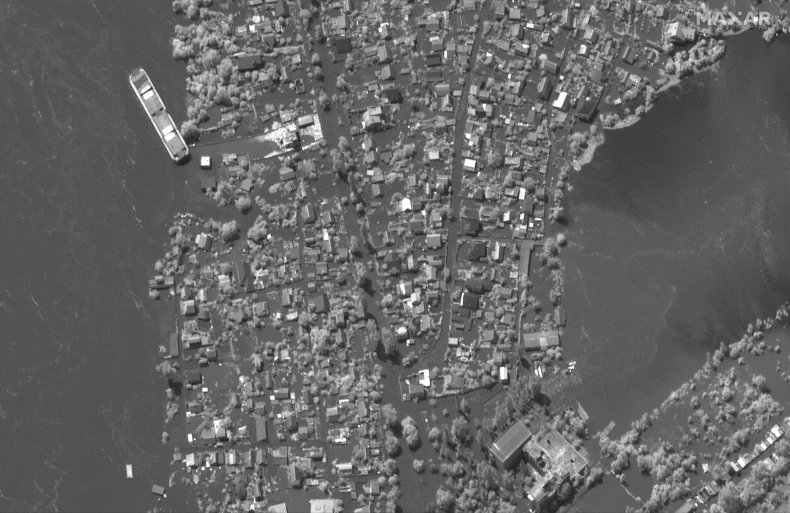
This past December, after enduring over eight months of Russian occupation, Artyom, his wife, their two children, and his elderly grandmother evacuated to Odesa. The move occurred just one month after Russian troops were forced back across the Dnieper by a successful Ukrainian counteroffensive last fall.
"After our guys liberated the area, the Russians started shooting from across the river," Artyom explained. "With two kids, it wasn't possible to live there anymore, and so we left everything behind."
Until June 6, Artyom and his family still hoped that, eventually, they would be able to return home. That no longer appears to be an option.
"All of the little things we accumulated over the years are gone. The little store we ran is gone. If there was still any hope of returning, now that is gone too," he said. "When we left, at least we had somewhere to return to. Now we do not have anywhere to go."
If anything, the situation on the Russian-occupied side of the river appears to be worse. While it remains all but impossible to verify information coming from behind Russian lines, refugees who remain in contact with friends and relatives on the ground in the lower-lying, left bank areas of Kherson region recount second-hand stories of what their former neighbors are currently enduring.
Throughout the day on June 6, Katerina, a Ukrainian refugee who evacuated the still-Russian-occupied town of Oleshky last summer, updated Newsweek as to what she was hearing from friends back home.
At 11:01 a.m. Kyiv time, approximately eight hours after the dam was breached, Katerina sent a voice message saying, "I recently talked with my friend. She says although there is some panic in town, nothing has changed...my friend was told that, possibly, in four days or so, water will begin to appear in the town, but it's unlikely."
However, her friend also noted that "some people wanted to leave, but there were checkpoints that did not let them through. It's not clear why."
At 3:40 p.m. on June 6, less than five hours after her first message, Katerina said that the street in town running closest to the river "is completely flooded. People who did not have time to escape are currently sitting on their roofs...from the start of the flooding, they said it took around an hour for the lowest-lying houses to be submerged."
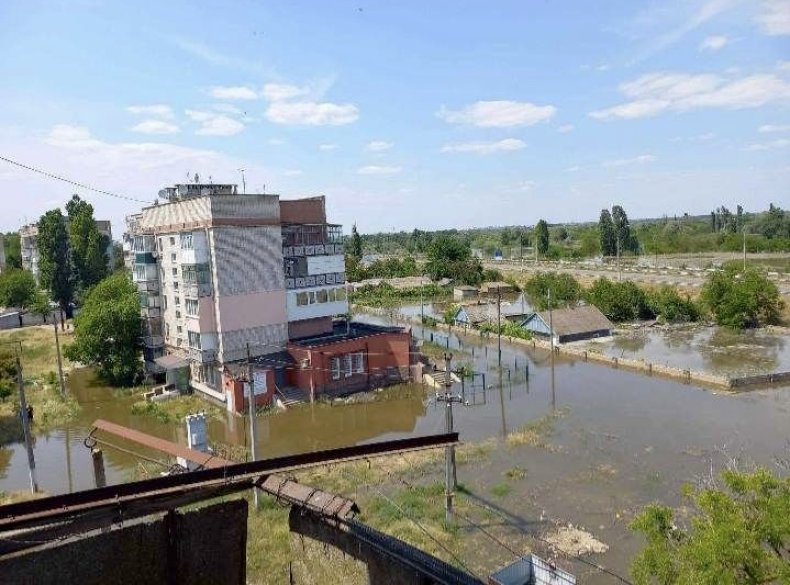
At 6:33 p.m. on the same day, Katerina added that "the water is still rising and rising, and it is not clear when it will stop. There are elderly people who cannot climb out onto their roofs, but no evacuation efforts are underway. The Russians have simply fled and left people to fend for themselves."
"The worst part though," she added, "is that they had mined our entire town, and now these mines are floating away. Some have detonated, but many must be hidden on the bottom somewhere. It's not clear how all of this will end."
On the evening of June 7, a few minutes before publication of this article, Katerina wrote to say: "There are many victims, and the water is still rising."
Despite the fact that Oleskhy remains under Russian occupation, television audiences in Russia itself have not been shown anything approximating the scenes that Katerina says her neighbors are witnessing. Instead, on Russia's Channel One, the 9 a.m. news broadcast of June 7 began with a segment titled, "In Nova Kakhovka, after the terrorist attack on the hydroelectric station, the water has begun to recede."
While the Kremlin-controlled report did note that seven residents of Nova Kakhovka had "disappeared without a trace," and that "settlements such as Oleshky and Golaya Pristyna remain in a disastrous state," coverage of the humanitarian situation quickly gave way to unsubstantiated accusations.
In a fast-paced, authoritative sounding voiceover, the channel's correspondent on the ground in the region said: "The Kyiv regime did not hide the fact that it was preparing this terrorist attack. The Ukrainian armed forces repeatedly struck the dam with heavy artillery. And local residents saw it all."
The segment then cut to footage from an interview with a local resident of Dnipryanka, a town with a pre-war population of just under 4,000, located 10 kilometers downriver from the site of the dam.
"They prepared for this for quite a while," says the local resident, who is said to have lost one of his chickens in the flood. "Zelensky made an announcement that, 'look, Russia wants to blow up the dam or something.' That means that they were expecting this, that they were preparing to do this."


